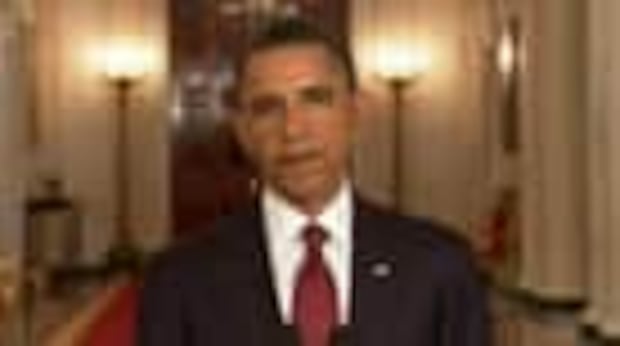Key dates in U.S. war in Afghanistan since Sept. 11, 2001
Last U.S. troops flew out of Kabul on Monday, ending America's longest war

The last U.S. troops flew out of Afghanistan, the military said on Monday, fulfilling President Joe Biden's pledge to bring an end to America's longest war after a chaotic and violent evacuation from Kabul.
The following is a chronology of U.S. involvement and major developments in Afghanistan over the past two decades:
Sept. 11, 2001
U.S. involvement in Afghanistan is triggered by attacks on the United States plotted in Afghanistan by the al-Qaeda militant group, led by Osama bin Laden, who was in Afghanistan under Taliban protection.
Oct. 7, 2001
U.S. forces begin air campaign with strikes on Taliban and al-Qaeda forces. Small numbers of U.S. special forces and CIA agents soon slip into Afghanistan to help direct the bombing campaign and organize Afghan opposition forces. The Taliban would swiftly be toppled, however, with no major U.S. combat deployment on the ground.
Nov. 13, 2001
U.S.-backed Northern Alliance forces enter Kabul as the Taliban withdraw south. Within a month, Taliban leaders have fled from southern Afghanistan into Pakistan.
December 2001
U.S. forces bomb the Tora Bora cave complex in eastern Afghanistan where bin Laden is reported to be hiding, but he slips over the border into Pakistan, where he disappears.
May 2, 2003
U.S. officials declare an end to major combat operations in Afghanistan. Under President George W. Bush, the U.S. focus turns to preparing for the invasion of Iraq, which required a diversion of U.S. troops, equipment and intelligence collection from Afghanistan. That allows the Taliban to slowly regroup, at first in the south and east.
The UN authorizes a NATO-led mission with the goal of stabilizing Afghanistan and establishing a new government. Canada is part of this mission, initially with about 700 soldiers deployed in Kabul and another 200 more in the country's southwest.

2006-08
With U.S. forces mainly fighting a surge campaign in Iraq, only a much smaller contingent is deployed in Afghanistan. The Taliban launch major advances threatening to recapture swaths of territory, especially in the south. In response, an enlarged NATO mission brings thousands more troops, notably British forces, hundreds of whom are killed in intense battles against the Taliban in Helmand province. Canada's contribution will eventually grow to about 2,300, stationed mainly in and around Kandahar.
Feb. 17, 2009
As Washington draws down in Iraq, newly inaugurated President Barack Obama decides to ramp up the force in Afghanistan. In his first major military decision as commander in chief, he orders in 17,000 more combat troops to reinforce 38,000 U.S. troops and 32,000 from some 40 NATO allies already on the ground. Later that year, with generals recommending a "surge" campaign similar to the one waged in Iraq in 2006-07, Obama would order an even larger buildup. The U.S. contingent would exceed 100,000 by the middle of 2010, carrying out extensive counter-insurgency operations across the country.
May 1, 2011
Bin Laden is killed in a raid by U.S. forces in Pakistan.
WATCH | Obama announces death of Osama bin Laden:
December 2011
U.S. officials say U.S. diplomats have held about half a dozen secret meetings with Afghan Taliban contacts over the previous 10 months, mostly in Germany and Qatar.
Canada's combat mission to Afghanistan ends, though soldiers stay in a training role until March 2014. In the end, more than 40,000 Canadian personnel served in Afghanistan between 2001 and 2014, with 158 losing their lives.
May 27, 2014
Following the surge campaign of Obama's first term, Washington rapidly draws down its forces and switches its emphasis to training and supporting the Afghan military. Obama outlines a plan to withdraw all but 9,800 American troops by the end of the year and pull out the rest by the end of 2016.
Dec. 28, 2014
The U.S. combat mission is officially concluded after the withdrawal of most combat troops and a transition to an "Afghan-led" war.

Aug. 21, 2017
U.S. President Donald Trump announces his strategy, calling for a small, open-ended deployment of U.S. forces providing support to Afghans, with the goal of forcing the Taliban to negotiate peace with the Kabul government.
Feb. 29, 2020
Under Trump, Washington signs an agreement with the Taliban in Doha to withdraw all U.S. troops. The Taliban agree to halt attacks on U.S. forces, not to let their territory be used for terrorism and to hold talks with the Afghan government, although those talks would subsequently prove fruitless.
April 14, 2021
Biden announces U.S. forces will withdraw unconditionally by Sept. 11, implementing the agreement reached with the Taliban by his predecessor, Trump.
WATCH | Biden to withdraw U.S. troops from Afghanistan by Sept. 11:
July 2, 2021
U.S. troops abruptly pull out of their main base at Bagram airfield 60 kilometres north of Kabul.
Aug. 15, 2021
After a stunning week-long advance capturing cities across the country, the Taliban seize Kabul without a fight. President Ashraf Ghani flees the country. The United States and Western allies launch an urgent airlift from Kabul airport to bring out their own citizens and tens of thousands of Afghans who aided them.
WATCH | Desperate Afghans flock to Kabul airport in attempts to flee:
Aug. 26, 2021
Islamic State launches a suicide bomb attack on the crowded gates of Kabul airport, killing scores of civilians and 13 U.S. troops, the deadliest incident for U.S. forces in Afghanistan in more than a decade.
Aug. 30, 2021
U.S. General Frank McKenzie, head of U.S. Central Command, announces completion of the U.S. troop withdrawal.
With files from CBC News


